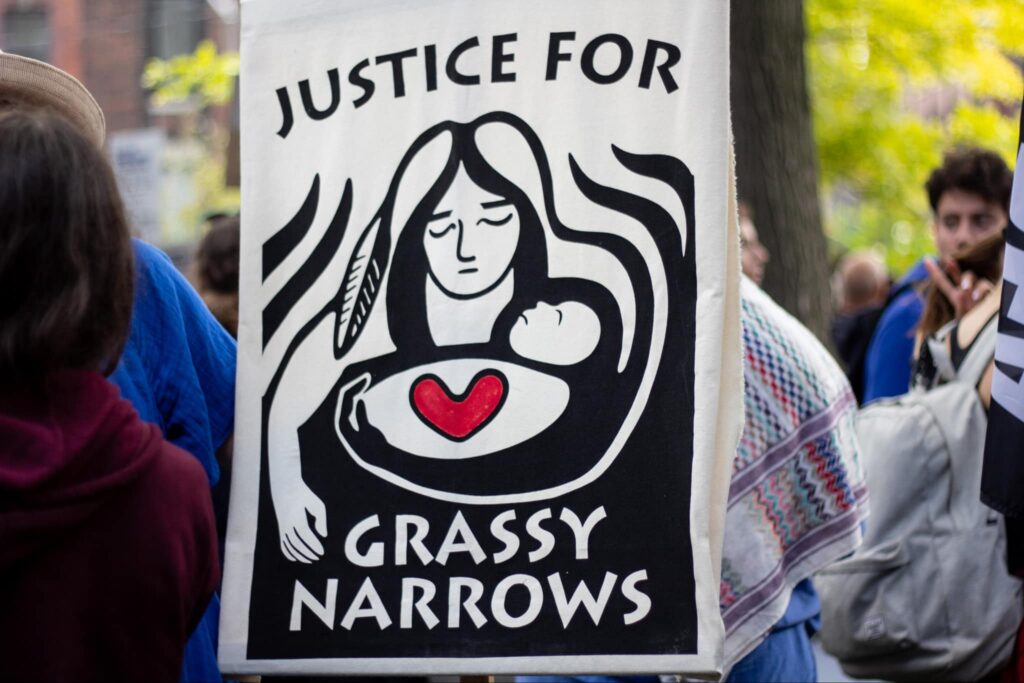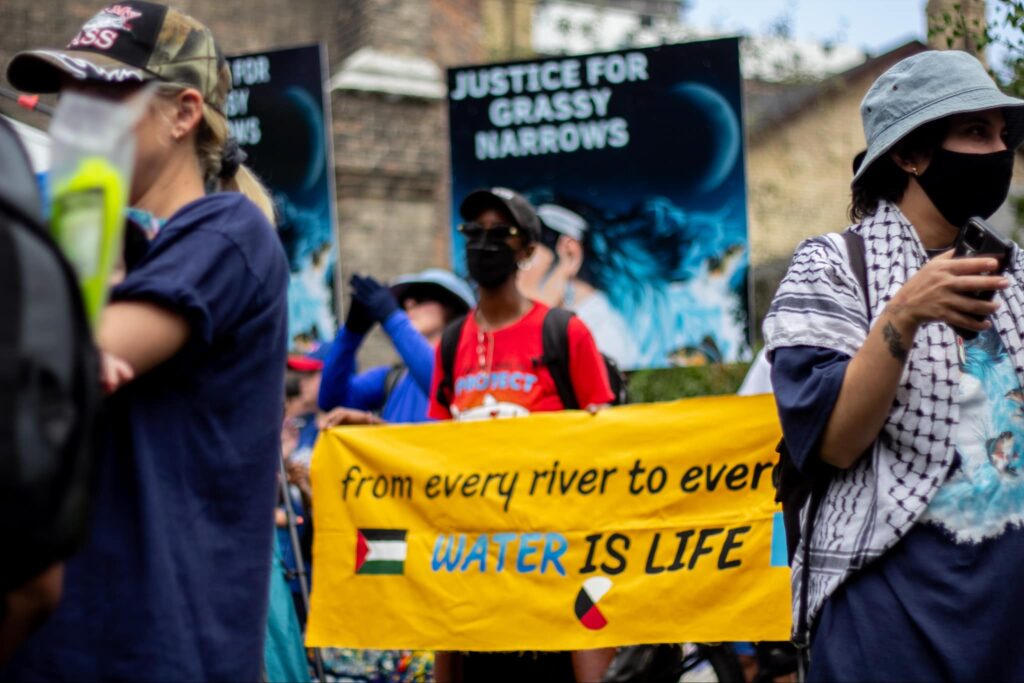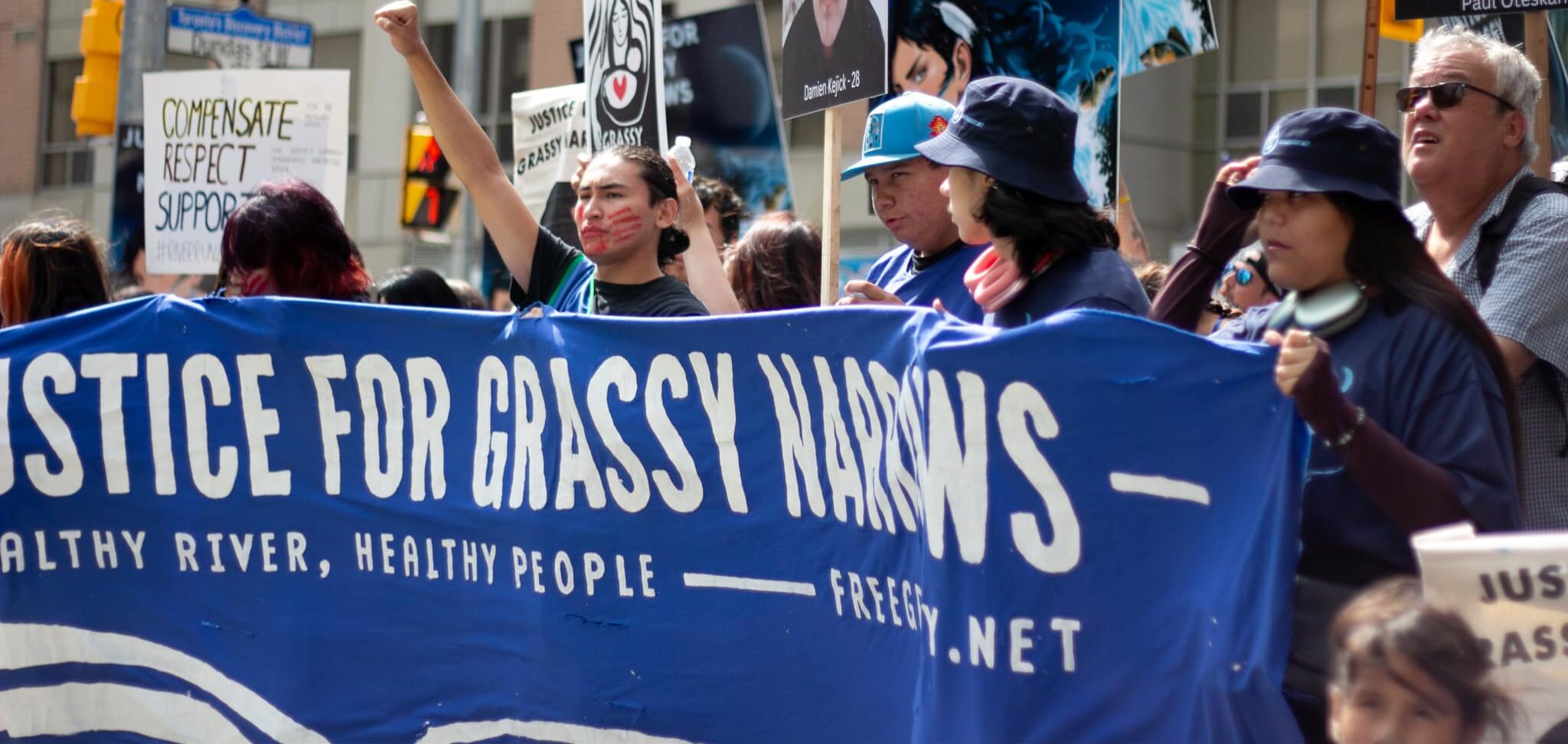On Wednesday, September 18, over 8,000 people, including students, workers, labour unions and community groups, marched to the Ontario Legislature with youth and community members from Grassy Narrows First Nation. The demonstration pushed longstanding demands to provincial and federal governments concerning the mercury poisoning of the Ojibwe people of Grassy Narrows which has been ongoing for decades. The event was the largest Grassy Narrows River Run in the event's fourteen-year history.
The crowd, led by youth holding photos of community members lost to health complications resulting from mercury poisoning, marched from Grange Park to Queen’s Park. Demonstrators unfurled a 150-metre banner outside the front entrance of the Ontario legislature which outlined their demands to the provincial government:
- Fairly compensate everyone in Grassy Narrows for the mercury crisis
- Respect for Grassy Narrow’s Indigenous Protected Area (no logging, mining, or nuclear waste storage in Grassy territory)
- Support in restoring their community and way of life from the damage that mercury has done
Referring to the Ford government, Arnold Pahpasay, a council member from Grassy Narrows Ontario, remarked to The North Star: "It's just like genocide. [They want] to get us out of the way. We just have to keep holding our ground. The ball’s in their court. It’s been in their court for a long time."

Decades of Unresolved Mercury Poisoning
Asubpeeschoseewagong First Nation (also known as Grassy Narrows First Nation) is an Ojibwe First Nations band from Treaty 3 territory, north of Kenora, Ontario. Between 1962 and 1970, the Dryden pulp mill, about 150 kilometres east of Grassy Narrows, dumped nearly 10 tonnes of mercury into the English/Wabigoon River system upstream from the community.
The mercury poisoned the fish and vegetation that were a main food and economic resource for Grassy Narrows as well as other Indigenous communities. This was done with the permission of the Canadian government, who have known about the presence of mercury and the grave risk it poses to Grassy Narrows people and their way of life since at least the 1990s.
The health effects of mercury poisoning, which have included neurological and cognitive damage, as well as the larger social consequences of such a disaster, are far from being a thing of the past.
Mercury is passed on to new generations through pregnancy and continued exposure, and recent studies demonstrate that mercury continues to be released today through deposits in the river. It may be combining with other chemicals to form an even more dangerous substance, methylmercury.
"We discovered this year that the river is still being poisoned, that the paper mill is still pumping effluent into the river, making the river and mercury more toxic. We have been reassured before that no more harmful products are being put into the river, but that’s not the case," explained Rudy Turtle, Chief of Grassy Narrows First Nation.
Despite ongoing calls for justice and the closure of the Dryden mill, it remains open today and holds an Environmental Compliance Approval with Ontario’s Ministry of the Environment, Conservation and Parks.

There are 67 long- and short-term drinking water advisories affecting First Nations reserves in Canada, today, most of which are in Ontario. Despite promises and commitments to safe drinking water for all, Canada’s Parliamentary Budget Officer published a report in 2021 stating that the federal government still falls short of the $138 million annual budget required to build and maintain safe water systems for First Nations.
A member of the Toronto chapter of the Palestinian Youth Movement participating in this year's march, remarked: “It’s mind-boggling that over the years and after a lot of promises from the federal government, Indigenous people still live on water restrictions and still the federal government finds money to go fund war crimes in Palestine.”
This past year, under pressure from the United States, the federal government projected a 30% increase to defence spending, bringing it to $44.2 billion.


